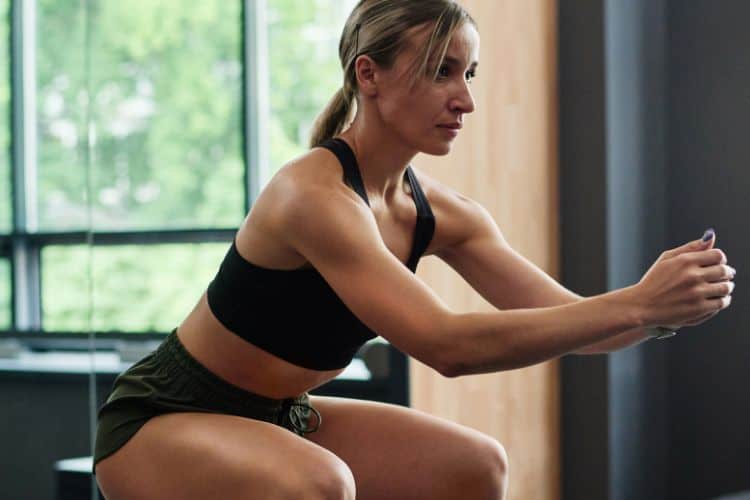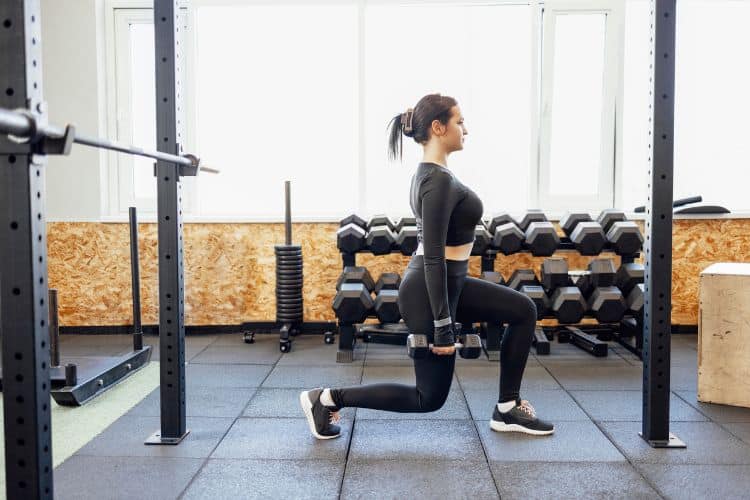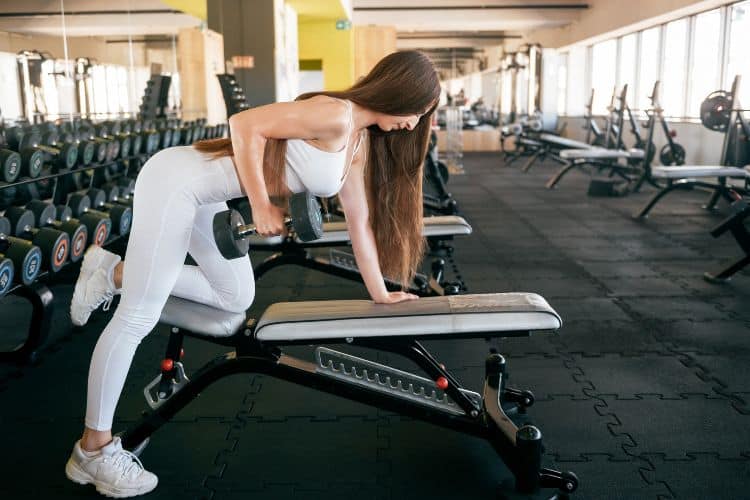Sign up for workout ideas, training advice, reviews of the latest gear and more.






When life gets busy, long training sessions often fall to the bottom of the to-do list. But a strong, sculpted back doesn’t require an hour in the gym—sometimes all you need is 10 focused minutes to activate your upper, mid, and lower back muscles. This 10-minute back workout is designed to help women strengthen their posterior chain, improve posture, reduce back discomfort, and build functional strength that supports every movement you make throughout the day.
Whether you’re a beginner or seasoned lifter, this quick routine fits perfectly into your morning schedule, lunch break, or post-cardio finisher. All you need is your bodyweight and a pair of light to moderate dumbbells—though you can complete the entire routine with no equipment at all.
This guide covers everything: benefits, warm-up, form tips, exercise breakdowns, a structured 10-minute circuit, progression options, and how to maximize results at home.
A short workout may seem too quick to make an impact, but when done with intentional intensity and proper form, 10 minutes is more than enough to:
Your back muscles—latissimus dorsi, rhomboids, traps, erector spinae—play a crucial role in your daily movement patterns. They stabilize your spine, support proper lifting technique, and create balanced strength across your upper body. A focused 10-minute session helps you activate and strengthen these key muscles.
In today’s digital age, forward-rounded shoulders and slouched posture are increasingly common. Targeted back exercises counteract this by strengthening the muscles that pull your shoulders back and support an upright posture.
Strength training—even short bursts—elevates your metabolic rate by activating large muscle groups. This workout engages your entire posterior chain, boosting calorie burn even after the session ends.
Weak back muscles lead to compensation from the neck and lower spine. A quick session that activates the upper and mid-back muscles can alleviate stiffness, reduce tension, and prevent injuries.
From lifting groceries to carrying kids to stabilizing your core during cardio, your back muscles contribute to virtually everything you do. A strong back is essential for functional movement and long-term wellness.
A pair of light to moderate dumbbells (5–15 lbs)
A mat or soft surface
A timer
Water
Optional: resistance band
If you have no equipment, you can still complete every movement using bodyweight only.
Before diving into the workout, take one minute to activate your shoulders, back, and spine.
Move slowly between arching your back upward and lowering it down while lifting your chest. This warms up the entire spine.
Move forward for 15 seconds and backward for 15 seconds to prepare the shoulders and upper back for pulling motions.
This workout follows a circuit format. Perform each exercise for 45 seconds, followed by 15 seconds of rest. Move continuously through all 10 movements without a break.
Muscles worked: lats, rhomboids, mid-back
Hinge at your hips with a flat back, keep your core tight, and pull the dumbbell toward your hip while squeezing your shoulder blade back. This unilateral version improves balance and eliminates strength imbalances.
Repeat on the opposite side to balance muscular strength and prevent one side from dominating the pull.
Muscles worked: upper back, rear delts, lower traps
Lie face-down, squeeze your glutes, lift your chest slightly, and sweep your arms from overhead down toward your hips in a wide arc, keeping them off the floor.
Muscles worked: entire posterior chain
Lift your chest, legs, and arms off the mat. Pull your elbows toward your ribs as if doing a lat pulldown, then extend outward again. This is a fantastic alternative to pull-ups.
Muscles worked: rear delts, upper back
Hold dumbbells or bands, hinge slightly, and open your arms outward in a fly motion. Pull through your back muscles, not your hands.
Muscles worked: upper back, lats, core
From a strong plank, row one dumbbell upward, then alternate sides. This movement challenges the back while requiring strong core stabilization.
Muscles worked: lats, mid-back
Start with your arms overhead, squeeze your lats, and pull your elbows down toward your hips. Move slowly and intentionally to maximize muscle contraction.
Muscles worked: upper back, mid-back, rotator cuff
Lie face-down and raise your arms into a “Y,” then a “T,” then a “W.” These movements improve posture, mobility, and shoulder stability.
Muscles worked: lower back, glutes, hamstrings
Lie on your stomach and lift your chest off the mat using your lower back muscles, keeping your gaze down. This strengthens your spinal erectors and reduces low-back stiffness.
Muscles worked: lower back, glutes, shoulders, core
Sit on the floor, extend your legs, place your hands behind you, and lift your hips. Hold while squeezing your back and glutes.
Lengthen the spine and open the upper back.
Clasp your hands behind your back and lift gently to stretch the front of your shoulders and counteract bad posture.
With the short duration, technique and intensity matter more than ever. Here’s how to maximize results:
Momentum reduces muscle engagement. Move with intention and focus on squeezing your back muscles at the top of every movement.
Back exercises can be tricky because you can’t see the muscles you’re working. Think about pulling with your elbows, not your hands.
Avoid rounding your back when bending over. Neutral spine = safer and more effective back training.
Shrugging activates your traps instead of your lats and rhomboids. Keep your shoulders down and back.
If you complete the workout easily, increase:
Even a small increase creates significant changes over time.
Regular back training pulls your shoulders into proper alignment and improves your overall posture throughout the day.
Strengthening your lats, rhomboids, and spinal erectors protects your spine and alleviates discomfort caused by sedentary lifestyles.
A strong back enhances your physique, giving you a toned upper body and a more sculpted waistline.
Your back works with your core to stabilize your torso, making daily tasks easier and safer.
Whether you’re lifting, sprinting, boxing, or doing HIIT, a strong back improves power, strength, and movement efficiency.
To see noticeable improvements in strength, posture, and muscle tone, follow this schedule:
Rest at least 24 hours between back sessions to allow full recovery.
Pair your 10-minute back workout with:
A 10–15 minute ab workout
A quick upper-body routine
A full-body HIIT session
A treadmill incline walk
A glute activation warm-up
This flexibility makes the routine ideal for busy women who want maximum results with minimal time.
A strong back is the foundation of a strong body—and with this 10-minute back workout, you can build muscle, protect your spine, improve posture, and boost overall strength without needing long training sessions. Make this efficient routine part of your weekly schedule, focus on proper form, and challenge yourself as you progress. Consistency is key, and just 10 minutes is enough to start seeing (and feeling) real results.
For more back training resources and full-body routines, explore additional Women’s Fit Club workouts such as the Dumbbell Rows Workout, the 45-Minute Full Body Dumbbell Workout, the Beginner Weight Lifting Routine, the Full Body Gym Workout for Beginners, and our high-intensity 30-Minute Full Body HIIT Workout to build strength, burn fat, and stay consistent with your fitness goals.
Stay up to date on the latest women’s health, fitness and lifestyle trends and tips.